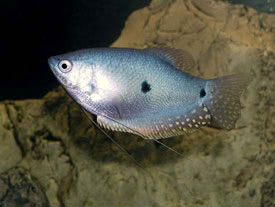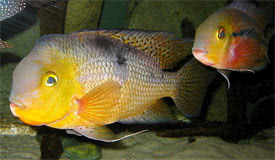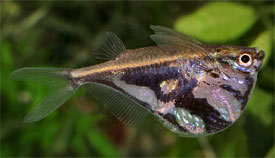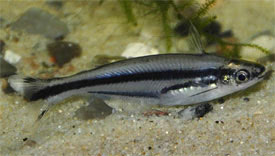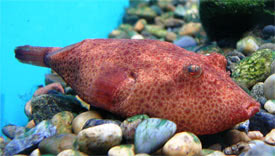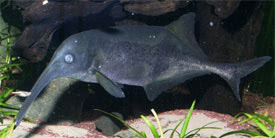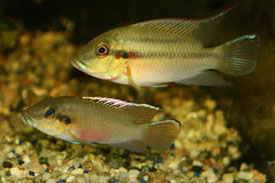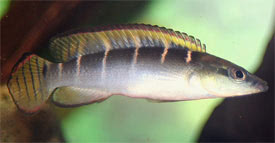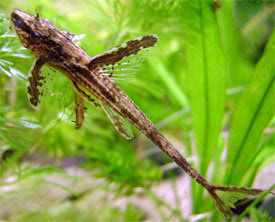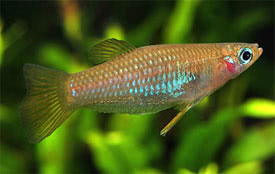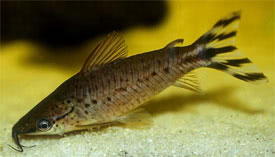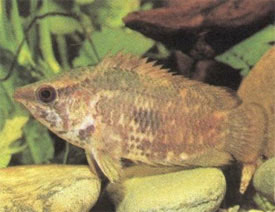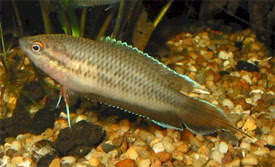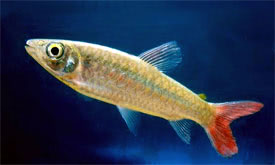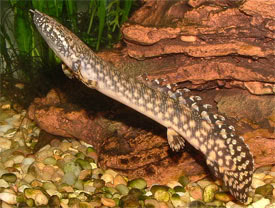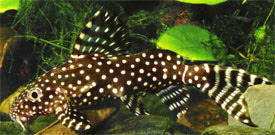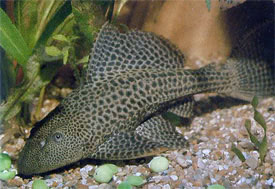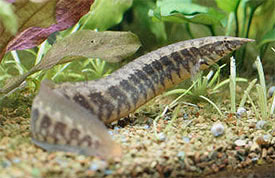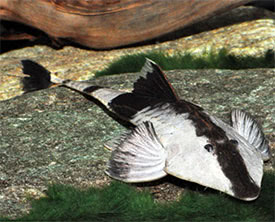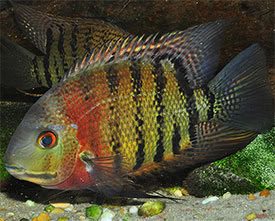
 Magyarul / Hungarian
Magyarul / Hungarian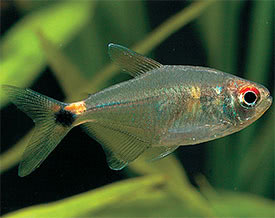
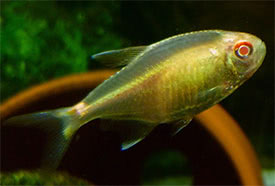
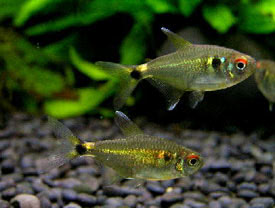

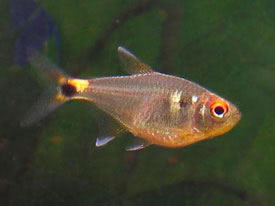

- Scientific name: Hemigrammus ocellifer
- Synonyms: Tetragonopterus ocellifer (Steindachner, 1882) , Hemibrycon ocellifer (Steindachner, 1882), Beacon Fish
- Common name: Head-and-tail light tetra
- Group: Characins
- Habitat: South America; Guyana, Suriname, French Guiana, Peru and Brazil.
- Size: 4-4.5 cm
- Biotope: Found in slow moving rivers, tributaries along the coastal zone, and also in floodplain lakes.
- Social behavior: A peaceful, schooling characin, that is a good choice for a general community tank. It can be kept with other similar sized and peaceful fish. They should be kept in a group of at least 6 species.
- Diet: Omnivorous; they will readily accept live, frozen and good quality dried foods.
- Breeding: Quite easy
- Tank: Minimum 60 litres
- Population: 6-7 fish for 70 litres
- Decoration: They can be kept either in a densely planted tank with dark substrate, or in a biotope aquarium. In the latter case use river sand as substrate and decorate the tank with some driftwood branch or roots and place some dried leaves over the substrate. Let the leaves to stain the water. Subdued lighting will bring out their beautiful colors.
- Temperature: 24-28 °C
- pH: 5.5-7.5
- Hardness: 5-19 NK°
- Lifespan: 3-5 years
Description: Hemigrammus ocellifer has an oval-shaped silvery body with arched grayish-green back. There are 2 black spots on its body, the first is behind the gill cover, and the second is on the caudal peduncle. There are also 2 orange spots near the black spots. There is a barely seen silvery-white line runs from the eye to the tail. The upper part of the iris is bright red, and the fins are transparent. Head-and-tail light tetra is a good choice to beginners as this fish is inexpensive and hardy. There is an albino color form of the fish that has become popular in recent years. There is possibly also a subspecies (Hemigrammus ocellifer falsus) that is more slender and lacks the spot behind the gill cover, and furthermore it is originate from Northwestern Argentina. Like all Hemigrammus, the taxonomic status of this species is currently uncertain and scientists agree that a full revision is required.
Mature females are slightly larger and plumper than males. Hemigrammus ocellifer can be also sexed by examining the swim bladder, which is visible through the semi-transparent skin of the fish. Males have more pointed and taper, while females have rounder swim bladders. Breeding is quite easy in a smaller 20-25 litres separate tank without lighting. Place some clumps of fine-leaved aquarium plants to the breeding tank where the fish can deposit their eggs, or cover the base with some kind of mesh that protects the eggs. Use soft (1-5 dKH), slightly acidic (pH 5,5-6,5) water with a temperature of 26-28 °C. Alternatively use peat filtered RO water. They can be spawned in a small group or in pairs, but either way condition the fish with plenty of small live foods before the act. Place the fish into the aquarium in the evening, and they will usually spawn in the next morning. The adult fish will eat the eggs, so they should be removed after spawning. The eggs hatch in 24-36 hours and the larvae become free-swimming after another 3-4 days. The fry can be fed with infusoria-type foods in the first days, and when they become larger, they can be fed with microworm or similar live foods. The eggs and fry are light sensitive in the early stages of life, so do not use any lighting during this time.












